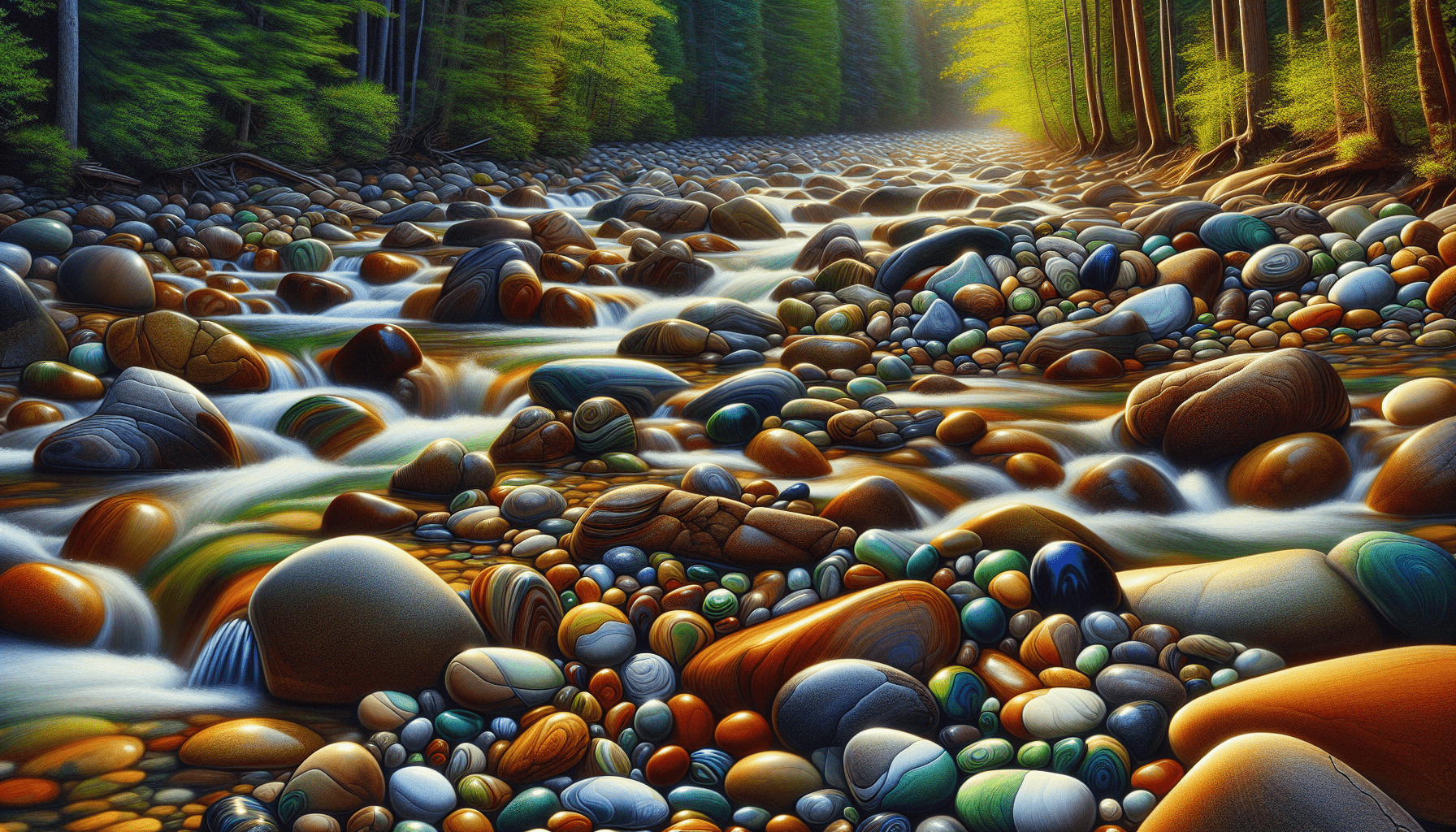Have you ever wondered where you can find the perfect rocks for painting? As a creative hobby, rock painting combines the beauty of nature with artistic expression. Whether you’re a seasoned artist or a beginner looking to try something new, finding the right rocks is the initial step toward creating your masterpiece. This comprehensive guide will provide you with detailed information on where and how to source rocks that are ideal for painting.

Understanding Rock Painting
Rock painting has gained popularity over the years as both a pastime and an art form. It involves using natural stones as a canvas for painting with acrylics or other suitable paints. The smooth surface and durability of rocks make them excellent candidates for creative exploration. They can be used to create decorative pieces for gardens, gifts, or community outreach projects where artists leave painted rocks for others to find and enjoy.
The Appeal of Rock Painting
What makes rock painting so appealing is its accessibility. Unlike traditional canvas painting, there is no need for expensive materials or prior experience. Anyone can enjoy this craft. It also offers a unique way of connecting with nature, allowing you to utilize natural materials to express your creativity.
Considerations Before Collecting
Before embarking on your rock-collecting journey, there are several factors to consider. Understanding these will ensure you have the best materials for your projects while also adhering to legal and ethical standards.
-
Legal Considerations: It’s crucial to be mindful of local laws and regulations regarding rock collection. Many areas prohibit the removal of rocks from certain parks, beaches, or reserves to protect the natural environment. Always check for any restrictions or permit requirements before collecting rocks.
-
Ethical Practices: Just as important as legality are ethical considerations. Rock collecting should be performed responsibly, ensuring that you do not harm wildlife habitats or disrupt ecosystems. Leave no trace and only take what you need.
-
Rock Characteristics: Not all rocks are suitable for painting. Look for rocks that are smooth, flat, and non-porous. These characteristics will provide a better surface for painting and ensure the longevity of your art.
Ideal Locations for Sourcing Rocks
Finding the right places to source painting rocks can make all the difference in your projects. There are several ideal locations where you can find high-quality rocks.
Natural Water Bodies
Rivers, lakes, and beaches are excellent places to find polished and smooth rocks due to natural water erosion.
-
Rivers and Streams: Riverbeds often contain rounded and smooth stones of various sizes. The constant movement of water over time erodes rough edges, leaving behind rocks perfect for painting.
-
Lake Shores: Similar to rivers, lakeshores can be abundant with smooth stones. Walking along the perimeter of a lake may yield a collection of rocks varying from small pebbles to larger stones.
-
Beaches: Coastal beaches, particularly those with pebble banks, are rich in smooth rocks. However, be mindful of regulations at beaches, especially within protected areas or national parks.
Rock Quarries and Landscaping Supply Stores
For those who prefer a more convenient source, rock quarries and landscaping supply stores can be a reliable option.
-
Rock Quarries: While quarries are commercial sites for mining rocks, it may be possible to obtain a variety of stone types suitable for painting. Contact your local quarry to check if they sell smaller rocks directly to individuals.
-
Landscaping Supply Stores: These stores often stock river rocks and other decorative stones. Although you may need to purchase them, the stones are usually sorted by size and quality, saving you time and effort.
Public and Community Spaces
Certain public and community spaces can present opportunities for finding painting rocks, provided it’s allowed.
-
Community Gardens: Some community gardens or urban spaces might permit the collection of rocks as part of community projects or events. Always ask for permission first.
-
Local Parks: While many parks prohibit stone removal, some may have areas where collecting rocks is permissible. It’s important to inquire beforehand to avoid any legal issues.
Characteristics of Good Painting Rocks
Selecting the right rocks involves recognizing certain features that make them suitable for painting.
Surface Texture
Smooth rocks are generally preferable as they require less preparation and allow paints to adhere better.
Shape and Size
The ideal rock shape depends on your project; some artists prefer round stones for their aesthetics, while others choose flat ones for easier design application. The size should be manageable for painting.
Rock Type
While many rock types can serve for painting, it’s helpful to understand a few common ones:
| Rock Type | Characteristics | Suitability for Painting |
|---|---|---|
| Basalt | Smooth and dark | Good for light-colored paints |
| Granite | Speckled and rough | Needs more preparation |
| Sandstone | Grainy texture | Not ideal due to porosity |
| Limestone | Smooth and pale | Excellent for bright colors |
Preparing Rocks for Painting
Once you have collected your rocks, preparation is essential to ensure a quality finish.
Cleaning the Rocks
Cleaning your rocks thoroughly will remove dirt, debris, and any substances that might affect paint application. Use a soft brush and water to wash the stones, and let them dry completely before starting your project.
Priming the Surface
Priming creates an even base for your paint. A layer of acrylic gesso or white acrylic paint will enhance colors and ensure they adhere well. This is particularly important for dark or porous rocks.

Essential Tools and Materials
Here’s a list of essential tools and materials you should have for rock painting:
- Paints: Acrylic paints are the most common choice due to their versatility and durability.
- Brushes: A variety of brush sizes will allow for both broad strokes and intricate details.
- Sealant: A clear sealant or varnish protects your design from weather and wear.
- Palettes: To mix colors and hold paints.
- Detail Tools: Toothpicks, cotton swabs, and fine-tipped brushes are great for detail work.
Techniques for Rock Painting
Embrace different techniques to bring your artistic vision to life on rocks.
Basic Techniques
For beginners, start with basic techniques like dot painting or simple line work. These techniques can transform even a small collection of colors into impressive designs.
Advanced Techniques
Once comfortable, explore more advanced techniques like shading, blending, and using stencils for more complex patterns. Experimentation is key to developing your own unique style.
Community Involvement and Sharing
Rock painting is also a wonderful activity to do as a group or community. Many communities have projects for hiding and seeking painted rocks to spread joy and encourage engagement.
Conclusion
Finding and painting rocks is a rewarding activity that combines creativity with nature exploration. By understanding where to find the best rocks and how to prepare and paint them, you can turn a simple stone into a beautiful work of art. Remember to respect the environment and comply with local laws and guidelines as you collect your materials. Each rock painting is a unique expression of creativity, highlighting the beauty and uniqueness of every stone you encounter.



